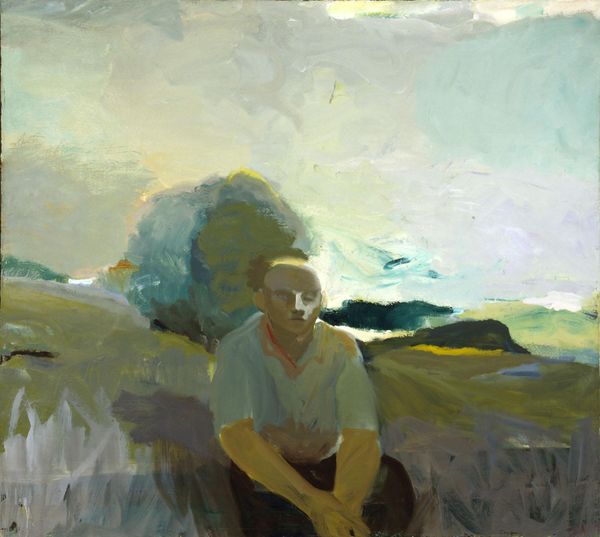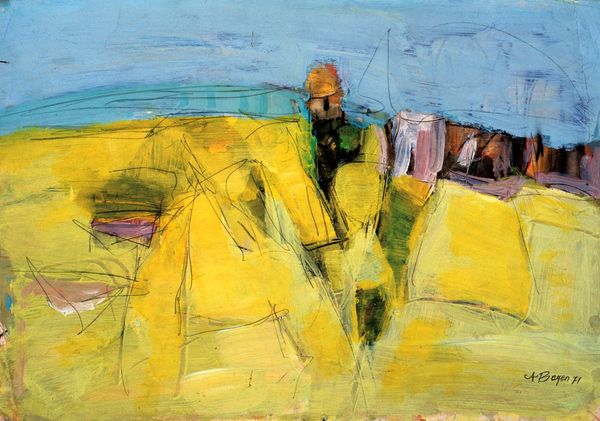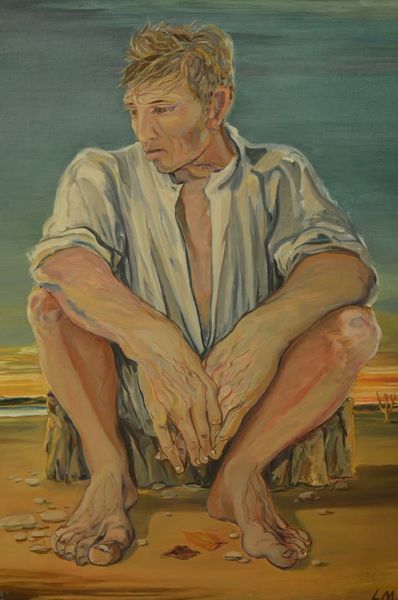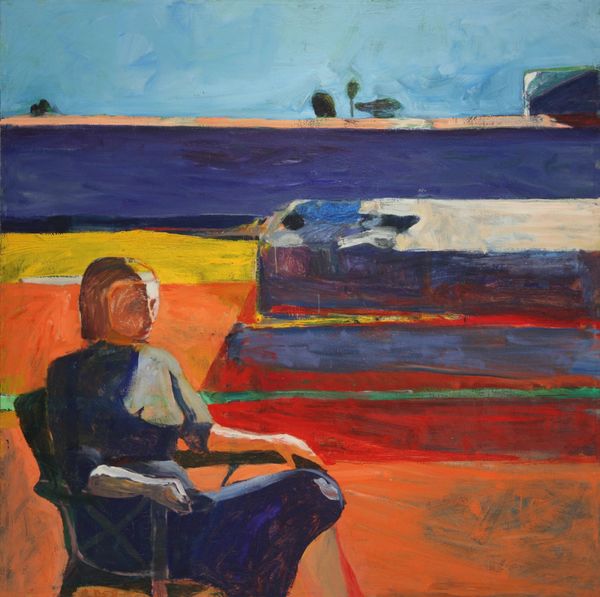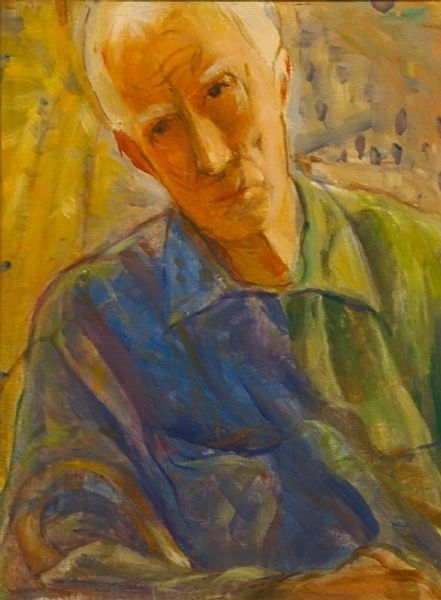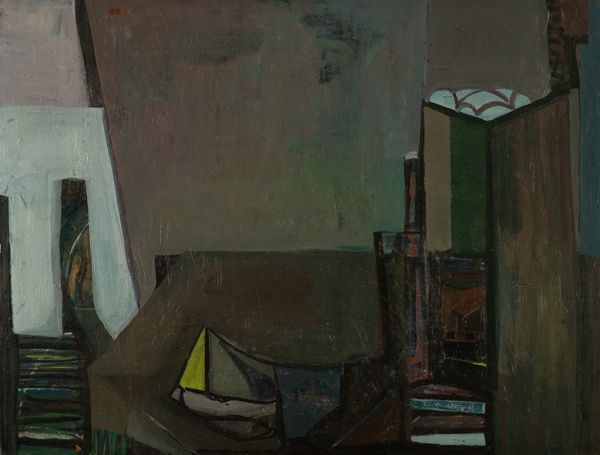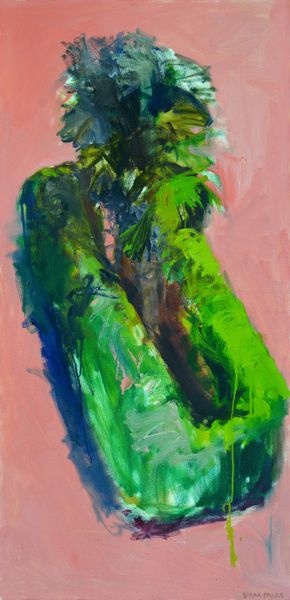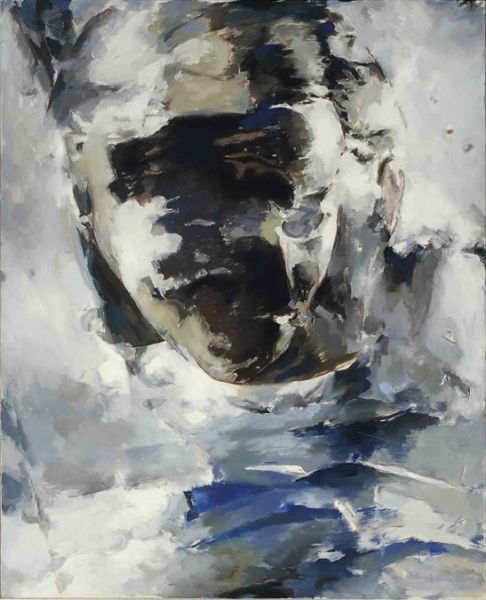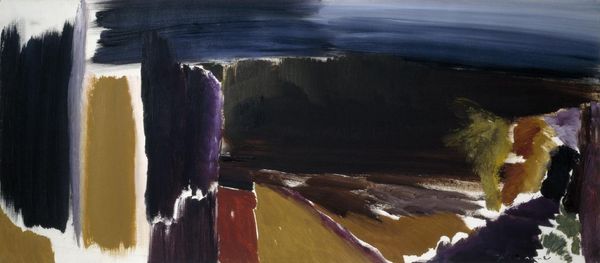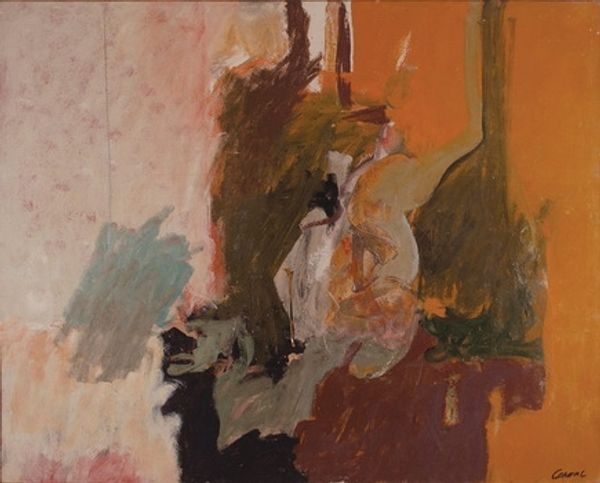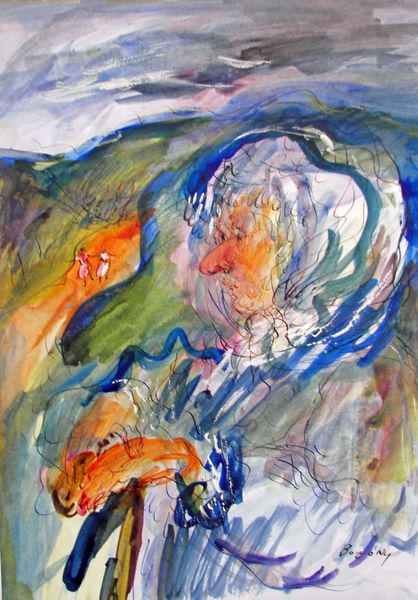
oil-paint
#
abstract-expressionism
#
abstract expressionism
#
abstract painting
#
oil-paint
#
landscape
#
figuration
#
oil painting
#
bay-area-figurative-movement
#
neo expressionist
#
modernism
Copyright: Elmer Bischoff,Fair Use
Curator: Standing before us is Elmer Bischoff’s "Man and Lavender Sky," created in 1958. The medium is oil on canvas, and the mood, to me, feels so unsettled, like a half-remembered dream. Editor: Immediately, I’m struck by the raw physicality of the paint. Look at those thick impasto strokes, particularly in the figure’s green shirt and the suggestion of field. You can almost feel the artist's hand at work. Curator: Precisely! It’s a dialogue between figuration and abstraction, isn't it? The figure, almost ghostly, merges with the landscape. Are we looking at a portrait, or is the man just a feature of the scenery? I feel this tension. Editor: And it’s fascinating to think about where Bischoff got his materials. Mid-century paints were becoming increasingly industrialized. What impact did those innovations have on the way he worked and, more broadly, on abstract expressionism as a whole? How accessible and how expensive where the materials for your common artist? Curator: Oh, that's an excellent angle! I tend to be pulled in more by the emotional resonance, but it's a crucial point. He was a key figure in the Bay Area figurative movement. Perhaps there’s something deeply personal in that blend of visible brushstrokes and ambiguous subject. What do you make of this man? Is he at peace, at odds with the world around him? Editor: Given the context of the Cold War and burgeoning consumerism, I see an intentional rawness, perhaps a critique of the clean, mass-produced aesthetic that was taking over. The materials shout, "I'm handmade, imperfect!" It speaks to an anti-establishment mood. Curator: That makes perfect sense! He seems pensive and strangely detached and could easily become invisible when you’re not giving the man your attention. It could very well point at detachment felt during those years as well. I wonder whether this kind of statement would apply if Bischoff were to paint “Woman and Lavender Sky”. What are your thoughts on it? Editor: The implications shift subtly yet profoundly. Contextually, during that period, a female figure in such a scene could subtly challenge conventional societal expectations. The perception may evolve into commentary about freedom or imposed limitations, molded by societal attitudes. Curator: I will carry that in my heart! It has been wonderful to have this shared experience! Editor: And I walked away from this even more reflective! Thank you for that.
Comments
No comments
Be the first to comment and join the conversation on the ultimate creative platform.
